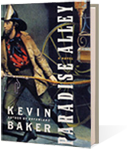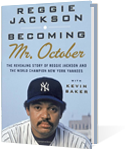‘It was a shift in tactics that seemed tailor-made for a free people, and it would lay the foundation for the modern American soldier, able to adjust and fight effectively on any terrain in the world’
Americans have always been suspicious of big government, particularly the federal government. Right up until World War II they also remained suspicious that a large, permanent and professional military might serve primarily as the enforcing arm of such a government. But as America grew, so did its interactions with the rest of the world. A United States that spanned a continent and boasted the world’s largest economy by the 1880s could no longer live in splendid isolation. It could no longer depend upon its usual brilliant amateurism in all matters military, nor could it rely upon the kindness of strangers to protect American commerce and interests around the world.
Much of the debate over just how the United States would take its proper place in the greater world revolved around a pair of extraordinary thinkers—one from the Navy and one from the Army—whose proposals would influence American strategy and tactics for decades to follow. We recently examined how Rear Admiral Alfred Thayer Mahan’s theories helped lead to the creation of—and the justification for the use of—”big gun” navies as tools of both nationalism and imperialism at the turn of the 20th century. We now turn to a man who arguably had an even greater influence on arms and tactics both in the United States and abroad—Colonel Emory Upton.
Born in upstate New York in 1839, the tenth child in a family of Methodist reformers, Upton decided he would be a soldier after reading a life of Napoléon Bonaparte when he was 14. Like Mahan, though, he did not start in the military, leaving the family farm at 15 for Ohio’s Oberlin College, one of the nation’s few racially integrated colleges at the time. At 16 he passed the entrance exams for the U.S. Military Academy at West Point, N.Y., a place he embraced for its structure, discipline and intellectual challenge. Deeply religious, Upton considered slavery an abomination and fought a sword duel with a Southern classmate—Wade Hampton Gibbes, later to become a Confederate artillery officer—over offensive remarks about Upton’s supposed relationships with black female classmates at Oberlin. Those of his fellow cadets who went to fight for the South he openly considered “traitors.”
Graduating eighth in his class of 45 cadets, he was commissioned a lieutenant of artillery and in 1861 aimed the first gun at the First Battle of Bull Run. In the engagement that followed, he was wounded in the left arm and side and had a horse shot from under him but refused to leave the field. He went on to distinguish himself, commanding a battery in the Peninsula Campaign, then an artillery brigade at Antietam. Finding the fuses of his large shells faulty in both instances, Upton substituted solid shot on the fly, and his superiors lauded his guns for their lethal efficiency. It was the beginning of a pattern; no officer was better at going to war with the army he had.
Upton didn’t drink, smoke or curse and rarely laughed or smiled. He prayed fervently and spoke and read of almost nothing but military tactics. A brevet major general by age 25, Upton was “the epitome of a professional soldier,” as Stephen Ambrose later wrote, and was as at home in the field as Mahan was lost afloat. Everywhere he went, Upton displayed immense courage and devised startling new tactics, sometimes on the battlefield itself.
Learning he was to be transferred back to West Point as an instructor, Upton instead secured an appointment as colonel of the 121st New York Volunteer Infantry, soon to be known as “Upton’s regulars.” Rebel defenders chopped his regiment to pieces in one of the futile Union assaults at Fredericksburg in 1862, but Upton was soon leading a brigade. Realizing that advances in musketry had made obsolete the centuries-old infantry tactic of having troops attack in a long line, firing—and being slaughtered—as they went, he chose a different approach. In the Overland Campaign of 1864 Upton decreed his brigade would rush the enemy fortifications in columns, without slowing to stop and fire. The idea was to reach the enemy as quickly as possible, then overwhelm him with bayonet and rifle butt before he could get off many volleys.
Upton put his new tactic to the test at Spotsylvania Court House in May 1864. Charging out of the Wilderness and across 200 yards of open ground, he led his men into the teeth of the best entrenched, most fiercely defended segment of the Confederate line. His tactic worked. Upton’s men pierced the Confederate position at its heart, driving the Rebels from their fortifications and two rows of trenches. It was a breakthrough that might have defeated Lee’s army and all but ended the war then and there. But as so often happened with the Army of the Potomac, planned support units inexplicably failed to show up. Upton’s men fell back at a terrible cost.
After leading his troops through more days of carnage at Spotsylvania and Cold Harbor, Upton was reassigned to Maj. Gen. Philip Sheridan’s command, then seeking to drive Lt. Gen. Jubal A. Early out of the Shenandoah Valley. Upton succeeded to division commander when his superior officer was killed at the September 1864 Battle of the Opequon, in the Shenandoah Valley, but just a few hours later Upton himself was knocked from his horse by a shell fragment that tore open his thigh muscle and femoral artery. Despite being ordered to the rear by Sheridan, he had himself carried about the field on a stretcher, directing his men until darkness brought an end to the fighting.
Upton’s actions earned him his stars as a brevet major general of volunteers but lost him his division when forced home to recuperate. Four months later, still limping, he was back, making his way to Nashville, where Maj. Gen. James H. Wilson was putting together a revolutionary new strike force: some 12,000 Union cavalrymen armed with the new Spencer breech-loading carbines. This was the first, primordial stirring of what would one day evolve into mobile infantry. As Ambrose relates, Upton and Wilson were putting into action Maj. Gen. William Tecumseh Sherman’s belief that cavalry was best employed across the vast American landscape by riding to a battle, then fighting as infantry—something their carbines made possible for the first time.
Armed with their new weapons and tactics, Upton and Wilson ran amok through the Confederate heartland, adding their own innovations on the fly. Everywhere they went, they burned or expropriated the Confederacy’s dwindling stores and munitions, its foundries, arsenals, workshops, railroads and ironclads. Along the way they dealt the outnumbered Lt. Gen. Nathan Bedford Forrest a rare defeat and finished with a flourish: Wilson’s cavalry capturing the fleeing Confederate president, Jefferson Davis, while Upton’s men seized the fleeing vice president, Alexander Stephens.
The ride of their Cavalry Corps left Upton in a state of almost religious transcendence. He later confided he “would like to commute the rest of [my] life for six months of just such military service.” Upton once again had from experience found a way around the hopeless full frontal assaults of the Civil War, gleaning insights into the nature of modern warfare others would not grasp even in the midst of a Somme or a Verdun.
Upton would never again get the chance to put his revelations into action. By the fall of 1865 he was in the mining boomtown of Denver, tasked with cutting expenditures and reducing the Army he loved back to its miniscule prewar size. The prospect of another 30 years of frontier duty, touring one desolate Western outpost after another to protect miners and settlers, loomed before him with about as much appeal as the sea held for Alfred Mahan. And just as Mahan managed to find a way back to shore duty, Upton was able to secure a transfer back to West Point by force of ideas—his ticket back was a revolution in infantry tactics, one that drew heavily on his experiences in the Civil War and which he would confirm in drill back at the Point.
With the old linear plan of attack now discredited, Upton argued in his 1867 manual, Infantry Tactics, for a new method that relied upon heavy skirmishers, who would advance on the enemy lines in steadily greater numbers, clearing the way for a final charge by companies of reserves. Instead of the old system of mass volleys under the tight control of commanding officers, Upton’s Army would rely heavily on individual responsibility, aimed marksmanship and unit morale. The American infantryman would be able to improvise and use to his advantage the sort of heavily wooded, irregular landscape that had prevailed in Upton’s Southern campaign.
It was a shift in tactics that seemed tailor-made for a free people, and it would lay the foundation for the modern American soldier, able to adjust and fight effectively on any terrain in the world. Predictably, Upton’s tactics faced ridicule and resistance from any number of his hidebound fellow officers.
Fortunately, their superiors felt differently. In recommending Upton’s new system to Secretary of War Edwin Stanton, General of the Army Ulysses S. Grant reported he was “fully satisfied of its superior merits and adaptability to our service; besides, it is no translation, but a purely American work.” Sherman defended Upton staunchly against all critics and against those who felt some of their own ideas had been incorporated into the manual. Sherman insisted it was Upton who “had combined all the advantages” of such ideas and “must be remunerated.” This was no small thing. Infantry Tactics, as the official manual of not just the regular Army but all U.S. militia units, netted its author more than $1,000 a year in royalties. It enabled Upton to do something very un-Upton: get married.
The serious-minded Army officer had found a perfect match in Emily Martin, a kind, gentle and highly religious young woman. They married in 1868 and set out on a blissful honeymoon to France and Italy. There she contracted some sort of lung infection, and while their marriage remained a happy one, she steadily declined, dying in March 1870, not yet 25 years of age and leaving no children.
Upton flung himself into his work more intensely than ever. By year’s end Sherman had appointed the 30-year-old widower West Point’s commandant of cadets. Assiduously supervising discipline and administration at the academy, Upton also worked as many as nine hours a day expanding his infantry tactics to accommodate artillery and cavalry—of which, of course, he also had firsthand knowledge.
He wanted more. The peacetime Army was smaller than ever and seemed likely to become as moribund an institution as Mahan’s Navy. Still looking for something to match his talents and boundless energy, Upton prevailed upon a supportive Sherman to send him on a research tour of the world’s armies. He set off from San Francisco in 1875.
This was no junket; by the time he returned to the United States in the fall of 1876, Upton had closely observed the militaries of China, Japan, India, Persia, Italy, France, Britain, Russia, Germany and Austria-Hungary. His study included detailed reports on the number and distributions of each army, the military schools and training of their officers, their tactics, administration, recruitment practices, munitions, equipment, hospitals, camps, barracks, pay and morale—along with any other general observations he felt worthy of mention.
In just over a year he submitted to the adjutant-general a 370-page book on his findings, The Armies of Europe & Asia, including 54 pages of specific recommendations for reorganizing the U.S. Army, based on what he had read and observed abroad. What Upton sought was nothing less than a revolutionary transformation of how America regarded and maintained its Army, beginning with the very first of his own 24 “general principles”:
To enable a nation to put forth, in the hour of danger, its greatest military strength, every citizen, in consideration of the protection extended to his life and property, is held to owe military service to his government.
The overarching cause Upton championed in his general principles was the creation of a large, standing professional Army for the first time in U.S. history, and it was a cause he aggressively supported for the remainder of his life.
If Mahan’s ideal fleet was based on England’s Royal Navy, Upton’s perfect Army mirrored Germany’s. In consolidating its empire, Germany had transformed its disorganized, fractious, often rebellious militias—the Landwehr—into something more along the lines of America’s modern Army Reserve. The government drafted or recruited soldiers for three- to five-year periods, after which they would spend four years in the active reserve and another five in the Landwehr, called up every six months for weeks of training and maneuvers.
In times of war the government could quickly mobilize an effective, coordinated fighting force. In times of peace the standing professional army, headed by a general staff, ran advanced war colleges, plotted strategy, reviewed tactics, and evaluated officers and men. In the 1870s this system had enabled Prussia and its German allies to rout every European force sent against them, and in Upton’s time all the major continental powers were rapidly emulating this system, steadily expanding the size of their armies and soon to institute universal conscription.
By then superintendent of the Artillery School of Practice at Fortress Monroe, Virginia, the nation’s only military postgraduate institution, Upton embarked on an all-out effort to win the reforms he wanted. He set to work on a study of all of America’s wars from the Revolution forward. His intention was “to show the enormous and unnecessary sacrifice of life and treasure which has attended all our armed struggles.” Because the United States had been unprepared for every war it had ever fought, Upton believed, it had ended up paying vastly more in lives and treasure than it might have otherwise.
The Military Policy of the United States often makes Upton seem a master stylist in its copious use of statistics and citations. In his reformer’s zeal he also tended to push his historical arguments to the breaking point—the U.S. could hardly have “prepared” a national military force for the Revolution, for example, when it was not yet a nation. And when it came to the Civil War, Upton vented his spleen on all the policies that had bedeviled the Union cause: political generals; civilian interference in promotions and battlefield strategy; militias with variable terms of enlistment that might decamp for home on the eve of important battles. The federal government, he wrote, was trying to “save the Union by fighting as a Confederacy, [while] the Confederates sought to destroy it by fighting as a nation,” abandoning states’ rights, adopting a draft early in the conflict, and overriding the prerogatives of state governors in appointing militia officers. Yet this was an almost risible caricature of Confederate war policy, as the rebellion’s central government struggled constantly—and often in vain—to force local areas to comply with the draft, and governors to send their militia regiments out of state.
Such arguments exposed just how cloistered Upton had become in the Army, how cut off he was from his nation’s traditions and beliefs. He was attuned enough to the popular mood to restrain himself from calling for a “big Army” on anything like a European scale. What Upton ultimately proposed was a regular Army of 25,000 men, with a trained reserve of 140,000 national volunteers. All of this might be brought about, he estimated, for an additional expenditure of only $15 million.
It was a proposal modest enough to win the support of both Upton’s military superiors and many of the politicians he considered blind to the national interest. But again Upton’s deaf ear led him to a gaffe. Searching for some reason why the United States, settled behind the world’s greatest oceans with no imminent foreign or domestic enemies, should require even this force, he pointed to the nationwide series of labor disturbances as a possible task for such an Army to undertake.
The strikes, by workers laboring under horrific conditions and often for wages that left their families destitute, had faced brutal suppression by the usual mob of deputy sheriffs, company goons and state militias. But, Upton argued, on the next-to-last page of The Armies of Europe & Asia, “During the late riots, had there been available from 25 to 50 battalions of national volunteers, commanded by regular officers, it is possible, and probable, that much of the bloodshed and loss of property might have been avoided.”
At last, a role for the modern Army: Shooting American workers in the streets with maximum efficiency, or perhaps intimidating them out of exercising their rights in the first place.
Despite his vigorous advocacy, Upton’s military reform proposals stalled in Congress. One of their chief advocates, James A. Garfield, was elected president in 1880, which may have restored the theorist’s hopes. But by then the great human dynamo that was Emory Upton had begun mysteriously to wind down. His social circle had shrunk to a sister and a couple of close friends; he took delight mostly in entertaining a young nephew. Despairing—as usual—of regaining his old Civil War rank of major general in the peacetime Army, Upton seemed unable to finish his nearly complete Military Policy of the United States or to lobby Garfield.
The cause of his listlessness was likely physical. He began to suffer violent headaches and consulted a Philadelphia specialist for what was diagnosed as a sinus condition. The doctor treated Upton by placing a coiled electrical wire against the mucous membrane of his nasal passages and sending a spark through it. The doctor later speculated Upton might have been suffering from a tumor in his face or brain, but whether a tumor or the pain of his “treatment” was to blame, the headaches did not abate.
Transferred to the Presidio of San Francisco by early 1881, Upton enjoyed the sound of the Pacific surf at night and looked forward to resuming his work. But the headaches worsened, and his actions and words became increasingly erratic. He began to forget things, on one occasion telling a dinner companion that his new infantry tactics were so perfect they would end war, but then deciding they were a dangerous failure.
On March 14, 1881, Upton wrote his sister of his hope that God would “lead me to sacrifice myself, rather than to perpetuate a method which might in the future cost a single man his life.” He then wrote out a single line resigning his commission, picked up his Colt .45 pistol from his desk and shot himself in the head. He was just 41 years old.
Upton’s final manuscript was unedited and unpublished at the time of his suicide, and it would remain so until resurfacing in 1904, thanks largely to the efforts of Elihu Root, President Theodore Roosevelt’s secretary of war. While the Navy had performed splendidly in the 1898 Spanish-American War—at least against a hopelessly moribund, second-rate power like Spain—the Army had once again proved a spirited but amateur gabble of poorly led, poorly equipped and poorly supplied militias and volunteers.
With a few careful excisions, particularly with regard to the role of civilian leadership, the posthumous publication of Upton’s Military Policy of the United States would spark a revolution in the reform and professionalization of the U.S. Army. His ideas of a mobile, adaptable force, comprised of highly effective and self-reliant units at all levels, would inform the spirit of the American soldier.
Considering the central role the Army was to play in the world after his death, Upton might be said to have finally achieved the mark on history he had strived to leave. It could be said he was the prophet, if not father, of the American national Army—that is, an Army that possesses a permanent professionalized officer corps, a permanent strategic planning brain and well-established, reliable support systems and logistics.
Its citizen-soldiers would no longer coalesce on a haphazard, regional basis. Instead, they would be integrated into a true national Army—usually consisting of volunteers but able to realize rapid, exponential growth in times of emergency through universal conscription, as it did during World War II and the Cold War. Its troops would embody the general doctrines of the Army, able to function superbly as individuals and small units, as well as in massed divisions.
Upton’s Army was one that also studied and reacted to the world around it, in the best American traditions. The noble ideal of American exceptionalism had been stretched as far as it could in winning the nation’s continental wars. To meet the real challenges of an encroaching world, the country’s military—like its industries, its political and cultural institutions, and so much else—would have to learn from that world and learn to improve upon it. Emory Upton, in his furious journey around the globe, was the first American to embark seriously upon that quest, and he would set in motion a century of U.S. military innovation that has endured to this day.
For further reading Kevin Baker recommends Upton’s books, as well as Upton and the Army, by Stephen E. Ambrose.









